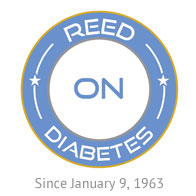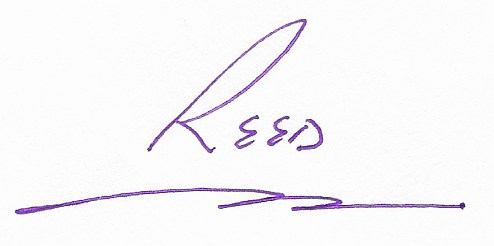As my 50th milestone with type 1 neared, I mentioned it to my endocrinologist. He smiled and said, “That’s a great start!”
My sister shared it with the pediatric endo (he’s a friend) that treats her son. His response was more in line with mine, “Oh wow… what a milestone. The Joslin clinic in Boston will want to know. And they are doing research on those that have lived with diabetes for 50 years.” He found the information and forwarded to me.
I mailed a completed Joslin medalist application (*) and waited their response. Several weeks later, I received acknowledgement and a medal from Joslin recognizing 50 years with diabetes. They also invited me to visit the Joslin center and participate in their medalist group study.
Here’s how the visit went:
Thursday, April 11, 2013
I extended a business trip to Boston and stayed at the Brookline Holiday Inn.
Friday, April 12
I took the hotel shuttle & arrived at The Joslin Center at 7:15am. Joslin is housed in this 1960s building that is a bit at odds with older architecture in the Brookline area. I entered the lobby, took the elevator to the third floor and asked for Sara Turek. She did a great job of welcoming me and providing an overview of the Medalist program. Here’s what she shared:
- Joslin started awarding the program with 10-year medals, then expanded to 25, 50, 75 and has now has two 80-year medalists.
- Joslin has awarded over 3,000 50-year medals and in 2013 would recognize 125 50-year medalists … a much larger number than I anticipated (but that’s great news, right?)
- In 2005, Joslin started research on the 50 year+ medalists. As part of that, I turned in a multi page information request. Joslin is looking for trends in those that live long and well with type 1. She said there haven’t been any silver bullets, but most of us share these traits:
- We tend to be active
- We tend to have a positive outlook
- We tend to have post high school education with many having
graduate degrees - On average we drink 6 cups of coffee per day
- We drink alcohol in moderation
Sarah then shared more about the clinical trial I was participating in. The study’s objective: to determine if the pancreas still produces insulin (apparently most 50-year medalists are). If so, that means that some beta cells are still active and could be reproduced. And that … could be promising.
As the procedure was explained, I became concerned about what was going to happen over the next few hours. Here’s how it went:
- I fasted 10 hours before arriving
- Insulin was suspended before starting the procedure and my pump removed.
- Vitals were taken and as follows:
- Blood sugar: 135
- Pulse: 62
- Blood pressure: 112/58
- I then consumed a drink that contained 66 grams of carbohydrate (similar to a glucose tolerance test)
- Blood samples were taken over a 2-hour period. Results were:
- 250 ml/dl after 1 hour. I started to feel tired with dry lips and not liking where this was going.
- 320 ml/dl after 2 hours. I feel like crap and glad it’s over. Proceeded with a bolus correction of 3.8 units.
After that procedure, Stephanie walked me down to the Joslin Eye Clinic on the 1st floor. I’ve had many annual Ophthalmologist exams … you know, the kind where they dilate your eyes and shine a bright light for in depth examination.
This was like none I’ve experienced. The brightness of the lights used for two separate tests blinded me for what seemed like 30-60 seconds. I don’t remember the name of the doctor, but she did say my eyes looked good. I remember thinking … ok thanks, but I can’t see!
I was still wiped out from the glucose tolerance test and now my eyes ached. Someone walked me back up to the third floor clinical study area. I mentioned that the eye exam was much worse than the glucose tolerance test. She said that’s what everyone says. I said thanks for the warning … she smiled.
I checked my blood sugar … 270. I only had 0.2 units of active insulin, so I bolused another 4 units. Come on baby… let’s get back in range.
Stephanie came in and gave me a voucher to Logan Airport. We walked to the exit and waited until the cab arrived. My eyes were still dilated, and I couldn’t see well. I told the driver the airline I was flying, but he apparently didn’t know the Boston airport. He dropped me at terminal B, but my flight was in E. I asked for directions and walked about 30 minutes with poor vision. The exercise and insulin combo worked as my blood sugar was 102 when I arrived at Terminal E. My flight was an hour late, so I grabbed a beer and consumed one of my go to protein bars.
My flight boarded at 6pm and I slept most of the way to Chicago. Made the connection to Kansas City and arrived at 9pm. With my vision back to normal I drove home, hugged my wife and son. What a day … my first 50 years of type 1 recorded and in the books.
Since 1893, Joslin Diabetes has been a world class treatment and research center for diabetes. My experience before, during and after the visit was as exceptional as their reputation.

